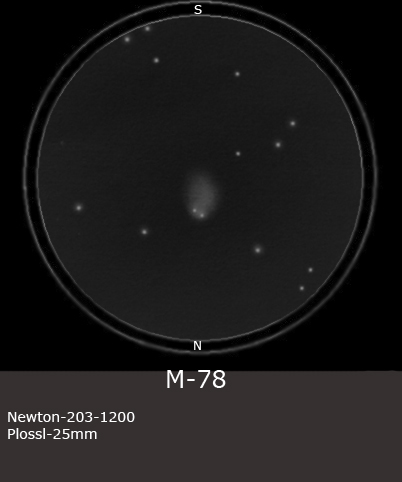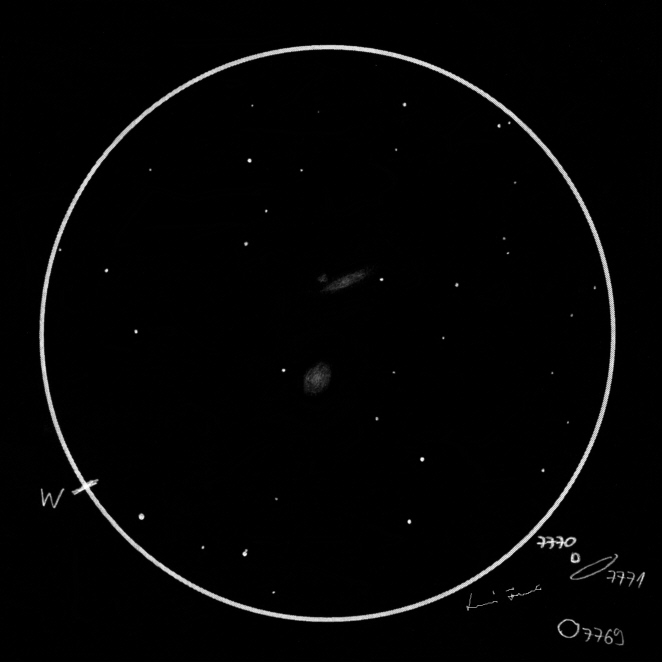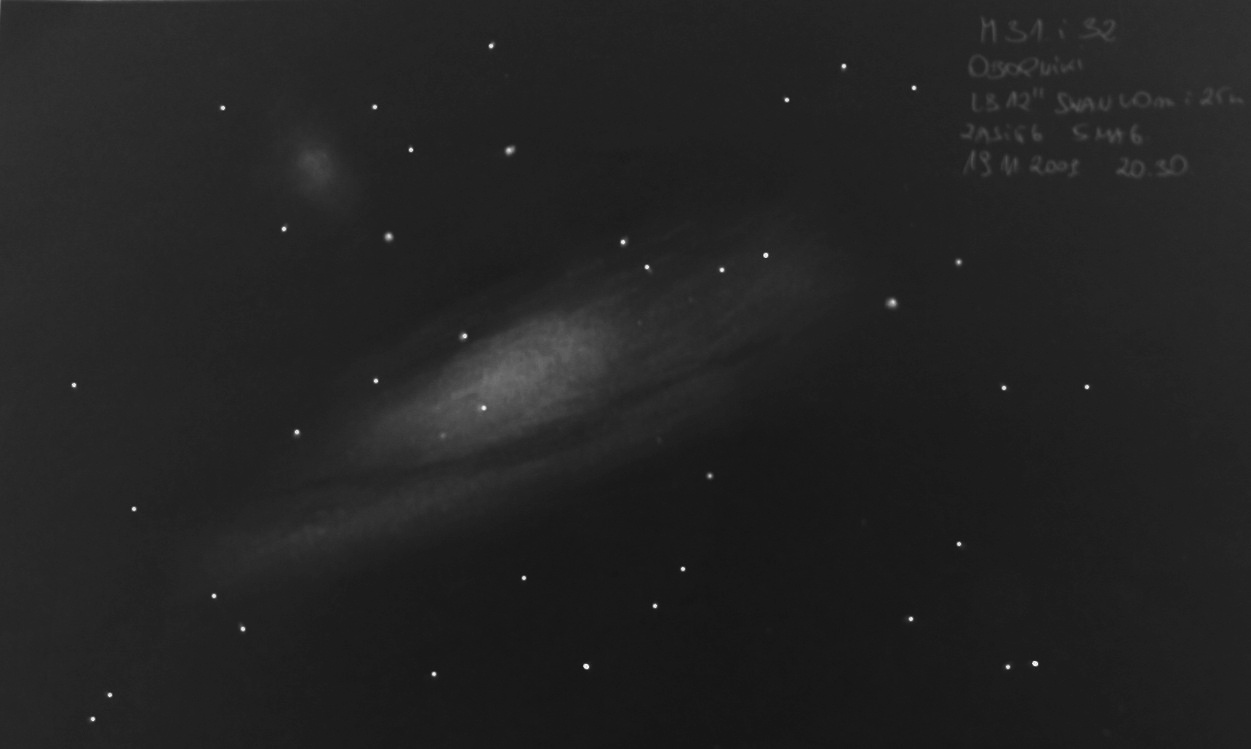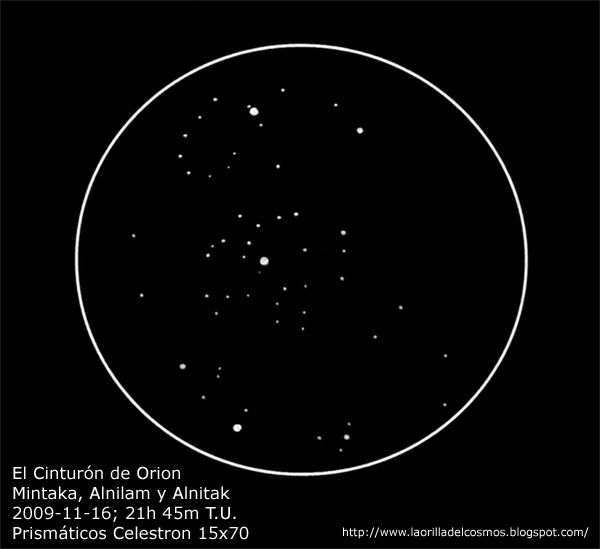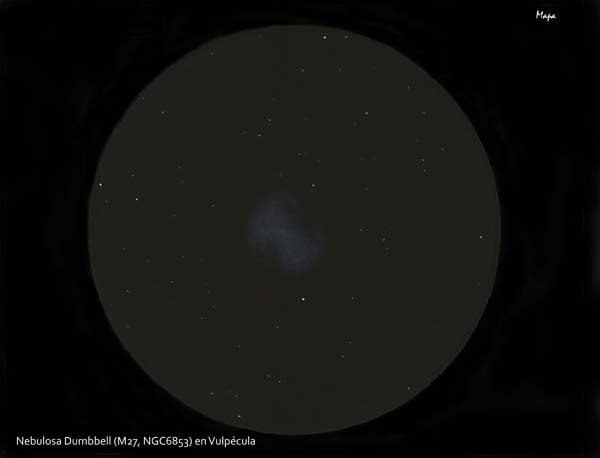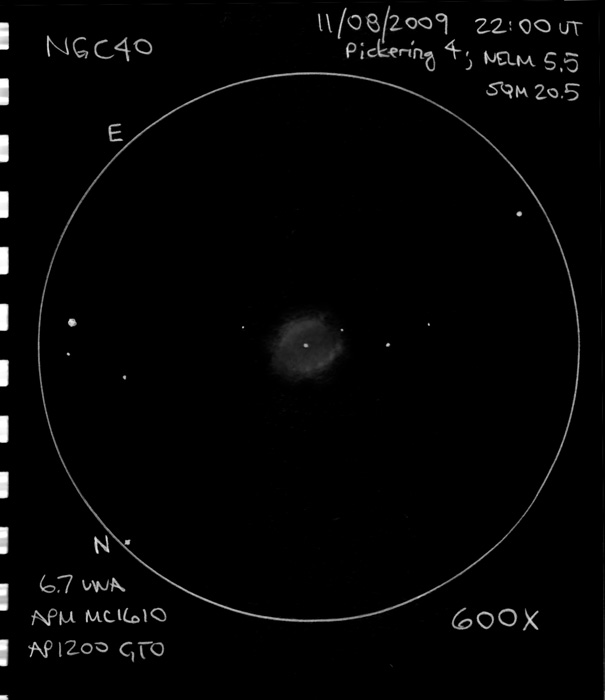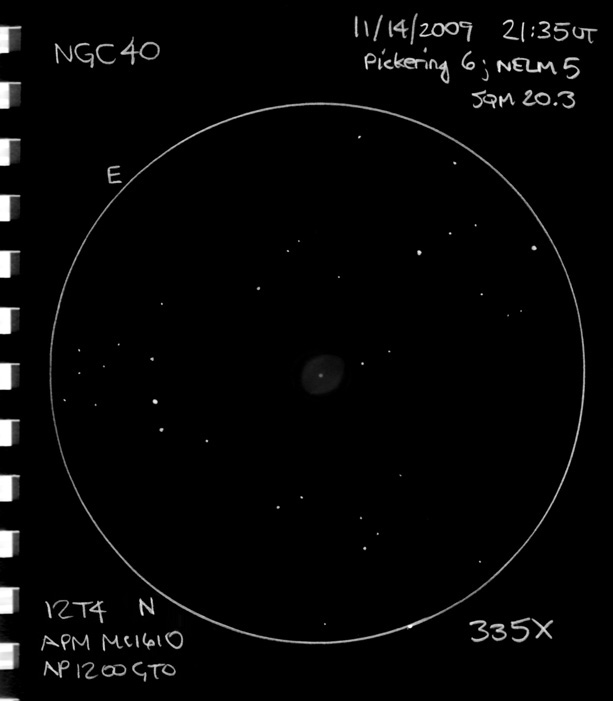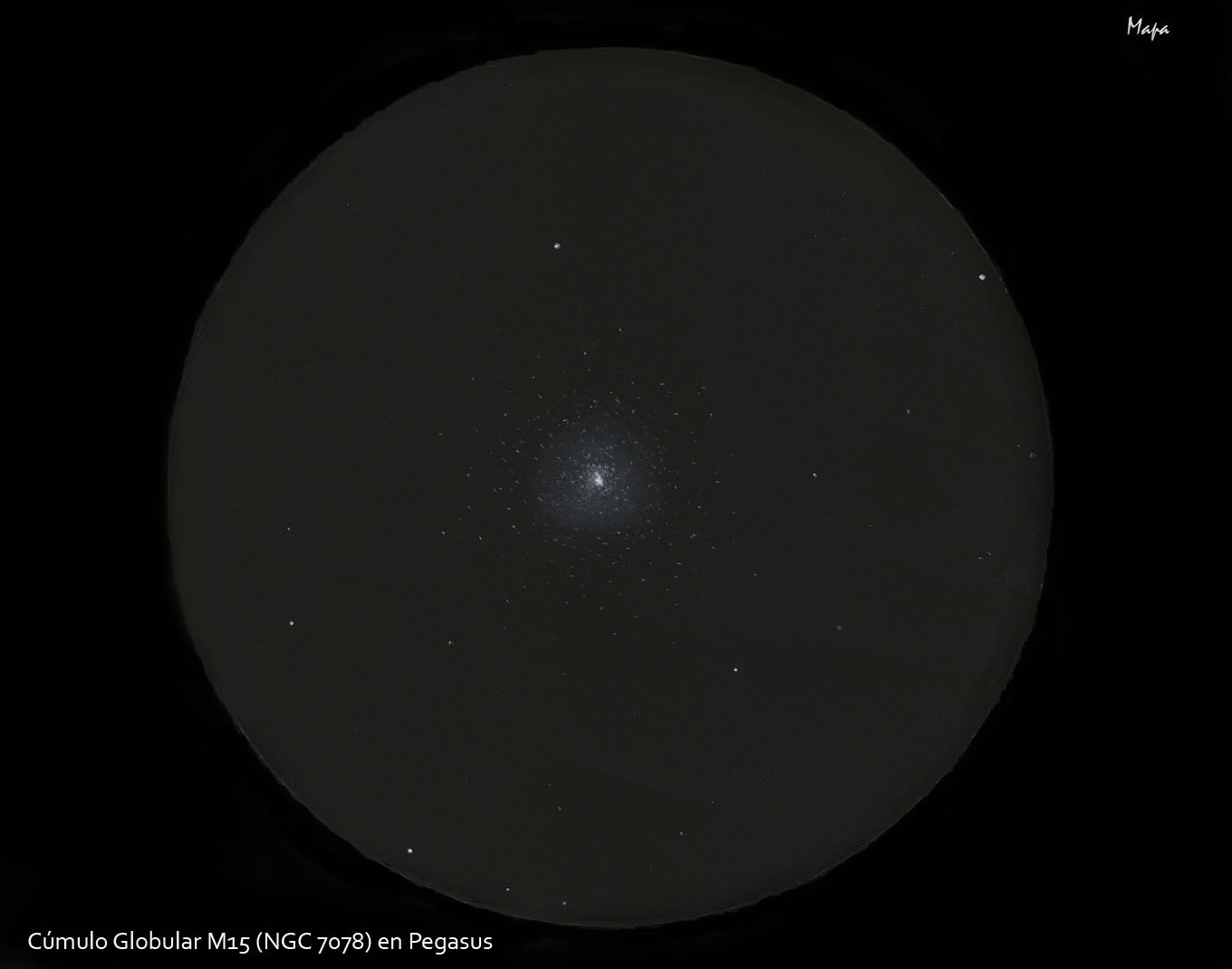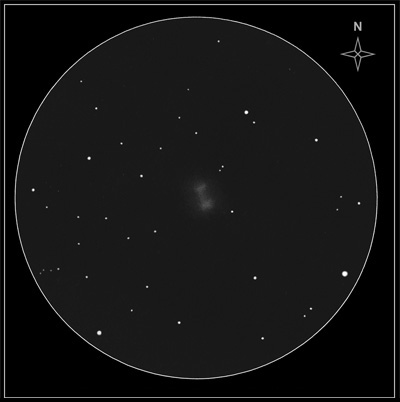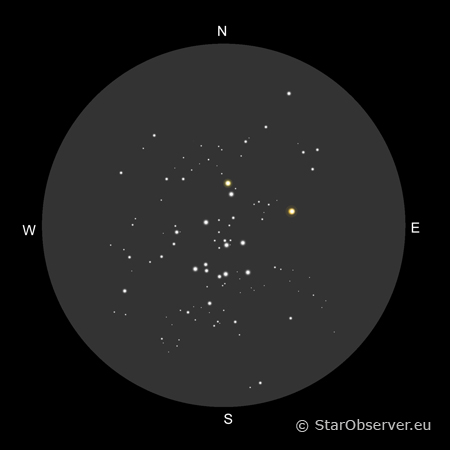
M44 (NGC 2632), the Beehive Cluster in Cancer
Sketch and Details by Math Heijen
Hello,
M44, also known as Praesepe, is a large and bright open cluster that is very easy to locate. Tonight I can see it as a faint smudge of light just using my naked eyes. Praesepe (also know as the Manger) is clearly visible as a round, or using averted vision, a more oval glow between two 4th magnitude stars, delta and gamma Cancri. In the 4-inch refractor at the lowest possible magnification this large open cluster is very well detached from the background, a wonderful view. This low magnification of 28x is achieved with the 35mm Panoptic, and is also used for making the sketch. M44 is a huge cluster, more than 1 degree, and in the 4-inch refractor with a field of view of 2.2 degrees I count more than a hundred stars. This makes it a rich cluster. The range of brightness of the stars is huge. The brightest stars are of magnitude 6, the faintest of magnitude 12. I see no glow of unresolved background stars or nebulosity.
There are many double stars and other geometric forms, like triangles and semi-circles, visible. South of the centre of Praesepe I see 4 bright white stars in an asterism that reminds me of the Keystone asterism in Hercules. Only this keystone hangs upside down. A lot of stars are arranged in chains, and there are definitely empty spaces visible, especially a wide strip running from southwest of the centre to the north. But also to the east and northeast of the centre I can see two large empty spaces. There are two colored stars visible. To the north of the centre of M44 I see a yellow star and to the east of the centre I see a star with a yellow-orange glow. I cannot detect any other stars that show color.
I have seen this cluster through my big binoculars many times, but the view through the 4-inch refractor is the best until now.
For the complete observing report and some background information on M44 (Praesepe, Beehive) follow this link.
Best regards,
Math Heijen


